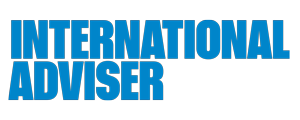Feeder funds, which were first launched in the Philippines in 2013, still account for a small percentage of the country’s unit investment trust fund (UITF) market.
The Philippines has only 16 feeder funds (mostly equity-focused) that together have $152m in assets.
By comparison, the wider UITF market, which is comprised of 108 products, had total assets of $15.1bn at the end of February, according to data from the Trust Officers Association of the Philippines (TOAP).
Jane Manago, head of wealth management at Rizal Commercial Banking Corporation (RCBC), told FSA she sees little demand for feeder funds among clients, who are more interested in the Philippine stock market than global equities.
Currently, RCBC offers one feeder fund that invests in global equities. The target fund is the Morgan Stanley Global Quality Fund, which invests at least 70% of its portfolio in developed countries, according to information from the bank’s website.
As of the end of February, RCBC’s feeder fund, which was launched in August 2013, had only $583,500 in assets, according to TOAP data.
Emmanuel Nikole De Vera, business development officer for wholesale and intermediary sales at ATR KimEng Asset Management, said that investors that do decide to diversify offshore would typically allocate 10%-20% of their assets to global investments.
Some clients diversify by using Philippine peso-denominated feeder funds, De Vera said. Only two are available in the Philippines, both managed by ATRAM Trust, which is a wealth manager that also manages its own funds (and is also affiliated with De Vera’s firm).
Launched last year, the two local currency feeder funds have combined assets of around PHP2bn ($39m), according to De Vera.
In the Philippines, five funds account for 80% of total feeder fund AUM, with ATRAM Trust dominating, TOAP data shows. (ATRAM manages a total of nine feeder funds).
ATRAM has sizable assets due to investment from institutional investors, De Vera added.
|
Feeder fund name |
AUM ($) |
Target fund |
|
ATRAM European Equity Opportunity Feeder Fund |
30.5m |
Blackrock Global Fund – European Equity Income Fund |
|
ATRAM Global Equity Opportunity Feeder Fund |
28.4m |
Fidelity Funds – International Fund |
|
ATRAM Global Dividend Feeder Fund* |
22m |
Fidelity Funds – Global Dividend Fund |
|
BPI US Equity Index Feeder Fund |
23m |
SPDR S&P 500 ETF Trust |
|
ATRAM Global Allocation Feeder Fund |
17m |
Blackrock Global Fund – Global Allocation Fund |
|
Total |
120.9m |
|
Source: TOAP, *Denominated in Philippine peso
In the Philippines, only banks and trust firms are allowed to launch feeder funds.
The country has two financial regulators, which complicates the landscape. UITFs, which are managed by banks and trust firms, are regulated by the country’s central bank, the Bangko Sentral ng Pilipinas, while mutual funds are managed by investment companies, which are regulated by the Securities and Exchange Commission (SEC).
The SEC was expected to allow investment companies to launch feeder funds last year, but nothing has happened yet, as reported.
Direct investing
High net worth individuals in the Philippines prefer investing directly in specific instruments, especially in bonds, rather than investing in bond funds, according to RCBC’s Manago.
With equities, investors prefer to pick specific stocks themselves, although they may allocate to local equity funds as they do not have the time to track stock prices during the day, Manago added.
“For the high-net-worth segment, most would prefer not to leave their money in funds because they want direct control of how their money is invested,” she said.
That is also one reason why Manago believes that the discretionary business in the Philippines may take some time to gain traction. Currently, there are a just a few clients who would leave their money under the disretionary model.
“They only leave a small percentage of their money to try it out – around 5%-10% of their investment portfolio,” she said.
Currently, Philippine HNWIs prefer fixed-income instruments over equities, according to Manago.
However, she finds that compared to 10 years ago, investments are now more diversified, as investors have increased exposure to equities and are also investing in foreign-denominated bonds, such as Australian, Canadian and renminbi-denominated bonds.
“They are shying away from investing in the longer-term duration bonds, which are anything above seven years, because of rising interest rates. They would rather stay at the short-end, which is one-to-three years,” she said.








